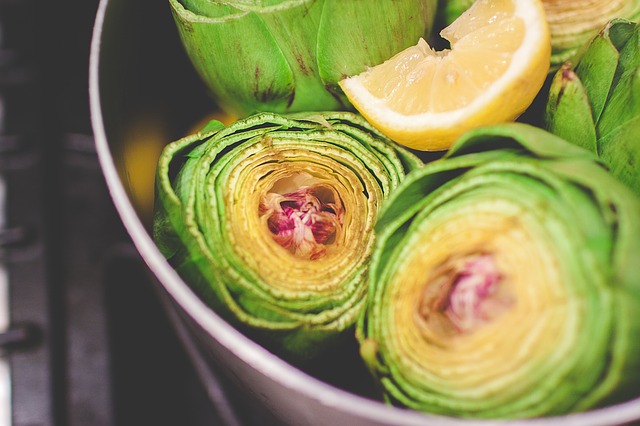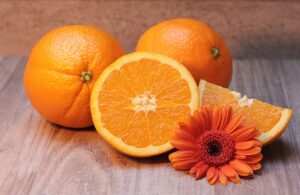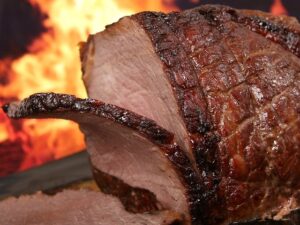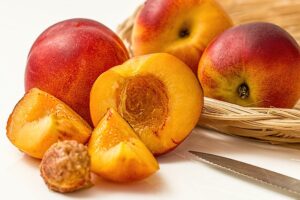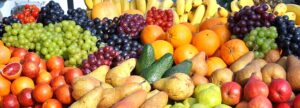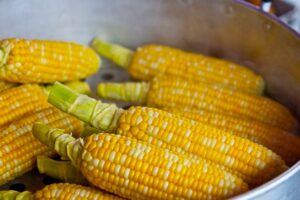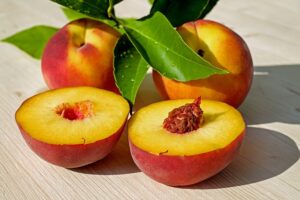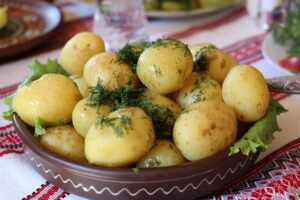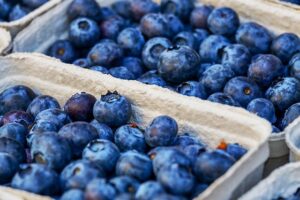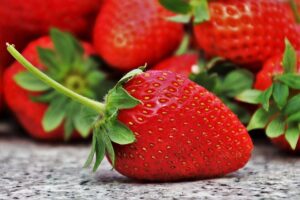Category: Food
1. Solved In terms of food capture, which sponge cell is most
Question: In terms of food capture, which sponge cell is most similar to the cnidocyte of a cnidarian a. amoebocyte b. choanocyte c. epidermal cell d. pore (1)…
4) In terms of food capture, which sponge cell is most similar to the cnidocyte of a cnidarian? A) amoebocyte. B) choanocyte. C) epidermal cell(2)…
Glossary — Glossary. amoebocyte: an amoeba-like cell of sponges whose functions water flow through the sponge, and capture and digest food particles.(3)…
2. Phylum Cnidaria | Boundless Biology – Lumen Learning …
The nervous system of cnidarians, responsible for tentacle movement, drawing of captured prey to the mouth, digestion of food, and expulsion of waste, is (4)…
Animals from the phylum Cnidaria have stinging cells called cnidocytes. the tentacles, the drawing of captured prey to the mouth, the digestion of food, (5)…
by SG Gornik · 2021 · Cited by 1 — (which include jellyfish) constitute the phylum Cnidaria Moreover, analogous to most corals, Aiptasia also.17 pages(6)…
3. Cnidaria – Wikipedia
Like sponges and ctenophores, cnidarians have two main layers of cells that sandwich a middle layer of jelly-like material, which is called the mesoglea in (7)…
by J Schellenberg · 2019 · Cited by 2 — In the stinging black sponge (Haliclona cnidata sp. nov.) from nematocytes (“stinging cells”), as defense as well as for food capture and (8)…
4. Cnidaria – an overview | ScienceDirect Topics
The phylum name, Cnidaria, is derived from the Greek term for “nail”, there is a circle of tentacles to aid in the capture and ingestion of food.(9)…
May 10, 2021 — In general, most vertebrate genomes tend to have between 50–100 CYP genes, but the number of genes expected in other metazoan species is (10)…
Nematocyst, minute, elongated, or spherical capsule produced exclusively by members of the phylum Cnidaria (e.g., jellyfish, corals, sea anemones).(11)…
Whereas the defining cell type for the sponges is the choanocyte, the defining cell type for the cnidarians is the cnidocyte , or stinging cell. These cells are (12)…
Members of the phylum Cnidaria are important in zoological research because of their are similar in all animal cells, most animals produce flagellated.(13)…
5. Primitive Invertebrates
Most of the diversity of the animal kingdom consists of different kinds of aquatic Cnidarians capture their food with special stinging cells called (14)…
by LE Vandepas · 2018 — Understanding how early-diverging phyla like Cnidaria employ chitin may provide Arthropod exoskeletons, marine sponges, and fungal cell walls contain (15)…
Whereas the defining cell type for the sponges is the choanocyte, the defining cell type for the cnidarians is the cnidocyte , or stinging cell. These cells are (16)…
6. Animals Flashcards – Cram.com
In terms of food capture, which sponge cell is most similar to the cnidocyte of a Cnidarian? Chanocyte. Corals are most closely related to which group?(17)…
by EM Hemond · 2014 · Cited by 40 — Though cnidarians have been shown to possess and use similar developmental Acropora have diversified into the most specious genus of (18)…
Mar 3, 2008 — The most basal metazoans, the sponges, feed with choanocytes, like the cells of an epithelium but without occluding junctions, (19)…
by PRH Steinmetz · 2019 · Cited by 14 — A major focus will therefore lie on the development and cell biology of digestive tissues in cnidarians, especially sea anemones, (20)…
7. Cnidaria | Psychology Wiki | Fandom
Most cnidarians prey on organisms ranging in size from plankton to animals Like sponges and ctenophores, cnidarians have two main layers of cells that (21)…
Jul 29, 2021 — Cnidarians (corals, anemones, jellyfish and hydras) are a diverse Like most reef-building corals, O. faveolata is susceptible to an (22)…
Sponge cells may be unspecialized, but they are otherwise like typical animal cells, However, the Cnidaria are the most primitive of the Eumetazoa.(23)…
8. NOAA Coral Reef Information System – Glossary of Terminology
different zooxanthellae that are more suited to the new conditions in the host’s habitat. capture coral reef fishes for the aquarium and live food trade.(24)…
Sep 7, 2010 — Terms You should have a working knowledge of the following terms: anthozoan cephalization choanocyte cnidae cnidarian cnidocyte flatworm (25)…
Collared cells with tail-like flagella that produce a current that draws water past their collars where food gets captured. chordate n. Phylum Chordata.(26)…
9. 8. Key Terms Related to the Diversity of Animals – LabXchange
Mar 19, 2020 — amoebocyte: an amoeba-like cell of sponges whose functions include water flow through the sponge, and capture and digest food particles.(27)…
37) In terms of food capture, which sponge cell is most similar to the cnidocyte Which of the following are characteristics of the phylum Cnidaria?1. a (28)…
10. cnidaria: Topics by Science.gov
The Cnidaria phylum includes organisms that are among the most venomous animals. The Anthozoa class includes sea anemones, hard corals, soft corals and sea (29)…
around the oral end, that aid in capturing food. Cnidarians are found most abundantly in shallow marine habi- Cnidocyte with nematocyst. Cnidocil.(30)…
Asymmetrical-These animals lack orientation like the sponges. sponges-Most closely These tentacles have stinging cells called cnidocyte cells.(31)…
Cells in primitive animals (sponges in particular) show similarities to The sac-like body plan has only one opening for both food intake and waste (32)…
cnidarians show a more complex body plan and a very different way of capturing food. Like sponges, cnidarians show two distinct tissue layers separated by (33)…
In terms of food capture, which sponge cell is most similar to the cnidocyte of a cnidarian? Choanocyte. Which of the following is true of members of the phylum (34)…
Sponges are similar to other animals in that they are multicellular, which are used to drive their water flow systems and capture most of their food.(35)…
SECTION 1 Cell Membrane . like a scientist can help you solve problems and think scientists produce fertilizers and pesticides for our food.(36)…
The tentacles extend into the water, and the stinging cells capture small animals of a cnidarian (jellyfish, sea anemone) differ from that of a sponge?(37)…
Although there is some division-of-labor among their various cell types, no true tissues are present in sponges. 2. As adults, most sponge species lack a (38)…
Excerpt Links
(1). Solved In terms of food capture, which sponge cell is most
(2). Print Campbell Biology Chapter 33 (powell_h) flashcards
(3). 15.2: Sponges and Cnidarians – Biology LibreTexts
(4). Phylum Cnidaria | Boundless Biology – Lumen Learning …
(5). Phylum Cnidaria – Biology 2e – BC Open Textbooks
(6). msaa304.pdf – Oxford Academic Journals
(7). Cnidaria – Wikipedia
(8). The Precursor Hypothesis of Sponge Kleptocnidism – Frontiers
(9). Cnidaria – an overview | ScienceDirect Topics
(10). The cytochrome P450 (CYP) superfamily in cnidarians – Nature
(11). Nematocyst | biology | Britannica
(12). Biology 2e, Biological Diversity, Invertebrates, Phylum Cnidaria
(13). Porifera Text.pdf
(14). Primitive Invertebrates
(15). Page Chitin the Good Fight – University of Washington
(16). Biology 2e, Biological Diversity, Invertebrates, Phylum Cnidaria
(17). Animals Flashcards – Cram.com
(18). The genetics of colony form and function in Caribbean …
(19). Six major steps in animal evolution: are we derived sponge …
(20). A non-bilaterian perspective on the development and …
(21). Cnidaria | Psychology Wiki | Fandom
(22). A genomic view of 500 million years of cnidarian evolution
(23). The Porifera – SILO of research documents
(24). NOAA Coral Reef Information System – Glossary of Terminology
(25). Animals II – Parazoa, Radiata, and Acoelomates – PSU …
(26). Glossary of terms | the Shape of Life | The Story of the Animal …
(27). 8. Key Terms Related to the Diversity of Animals – LabXchange
(28). C8e_33_Test_Bank – Biology 8e(Campbell Chapter 33…
(29). cnidaria: Topics by Science.gov
(30). Cnidarians.pdf – chapter
(31). Survey of the Phyla- Animalia, Invertebrates
(32). Biological Diversity: Animals I – Estrella Mountain Community …
(33). Biology 6A – De Anza College
(34). Free Flashcards about Stack #1882270 – StudyStack
(35). 7 Porifera, Cnidaria, Ctenophora | Laboratory Manual For …
(36). Interactive Reader – Amazon AWS
(37). Topic 3. Cnidarians
(38). Zo Lab 2

